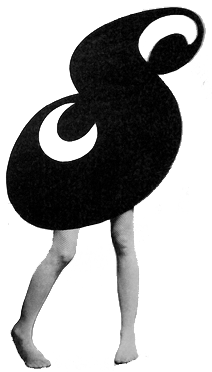IT'S OK. ↘
I am absolutely delighted to be in the midst of putting together a group exhibition at Charlie James Gallery: IT'S OK. ↘, opening January 20 and running through March 3, 2018.
I’ve been thinking a lot about adaptation and mutability—using what you’ve got and changing it to be as well suited as possible for the current moment or imagined future. With all the rough edges and awkwardness exposed, but perhaps manipulated. The title comes from the wall text Charlie has had up for the last 8 years or so that guides visitors to the downstairs gallery. I adapted it.
PRESS RELEASE
Charlie James Gallery is pleased to present “IT’S OK. ↘” a group exhibition curated by Sacha Baumann, featuring Nadege Monchera Baer, Hayley Barker, Megan Mueller, Stephen Neidich, Kottie Paloma, Molly Segal, and Luke Whitlatch.
John Laroche: You know why I like plants?
Susan Orlean: Nuh uh.
John Laroche: Because they're so mutable. Adaptation is a profound process. Means you figure out how to thrive in the world.
Susan Orlean: Yeah but it's easier for plants. I mean they have no memory. They just move on to whatever's next. With a person though, adapting is almost shameful. It's like running away.
—excerpt from Adaptation, screenplay by Charlie Kaufman and Donald Kaufman, adapted from the book, The Orchid Thief, by Susan Orlean
Seven artists explore the profound process of adaptation, eschewing any shame. In fact, it’s OK to adapt in an effort to be well-suited for the current moment or for an imagined future, despite the awkwardness mutability may expose. The artists employ disparate approaches: adjusting art practice to the space in which it is displayed, creating icons based on truths, adapting by moving on, creating armors for protection and dazzling displays, to both attract suitors and repel enemies. In “IT’S OK. ↘” adaptation is playful, practical, anticipatory, necessary, and sometimes excessive.
Nadege Monchera Baer’s mixed media drawing-paintings migrate between two poles, one that is intuitive and abstract and another built by definitive concepts. For this exhibition the work primarily begun in the latter mode of a specific event and then completed through the former exploratory path, allowing gesture, pattern and layering to animate and release inherently frozen moments into a complex less fixed and known, ultimately transformative. Hayley Barker's paintings and drawings are self portraits; they are icons. Images start with “beddrawings” and then become paintings. They include text and faces which come intuitively in morning drawing practices and reveal a woman-looking self in a variety of psychological states. Her small works draw from the worlds of dreams, mystical states and the mundane. Megan Mueller’s images are created by placing objects and photographs on a flatbed scanner, often inviting gesture and ambient light to distort the capturing of information. Her projects engage gravity, the peripheral and timekeeping through an ongoing investigation of the spaces where the built and natural environment merge. Kottie Paloma’s new paintings are composed of muted colors and text portraying a rough poetry of daily life in which he describes as abstract narratives leading the viewer into snippets or chapters of a yet to be completed book. His sculptures evoke the idea of reuse, form over function, and serve as the 3-D component of his narrative style. Stephen Neidich’s kinetic sculptures are made of industrial metal objects and tools found in the studio and the outside world. They leverage our familiarity of everyday objects against the experience and performance of making art. These gestural spinning and rotating sculptures make plain how, and from what materials they are made—they relish in the acrobatics of their production. Molly Segal’s paintings of oil fields, dying thistles, cacti, and cockroaches serve as reminders of cyclical interdependence. She is concerned with the costs and limits of intimacy. The use of water-media on slick nonporous surfaces reveal what happens when boundaries begin to blur and bleed. Luke Whitlatch’s mixed media paintings are visual representation of the ghosts of lore and personal experience. They are physical representation of the gray area involved in the passing on of stories. These abstract works act as a memorial for specific experiences that cannot be conveyed through conventional imagery.
About the curator: Sacha Baumann is an artist, designer, and arts business professional living and working in downtown Los Angeles. She is the curator and publisher of FULL BLEDE, a free, independent contemporary broadsheet featuring art, writing and design; Issue Four: The Pattern is currently in production. Sacha is a Master of Art, Art Business candidate at Claremont Graduate University, Sotheby's Institute of Art / Drucker School of Management. She holds a Bachelor of Arts degree in Visual Communication from San Francisco State University.
CHARLIE JAMES GALLERY
969 CHUNG KING ROAD, LOS ANGELES 90012 | T: 213.687.0844 | WED - SUN, 12 - 5

